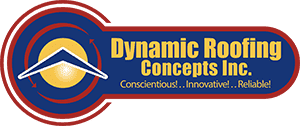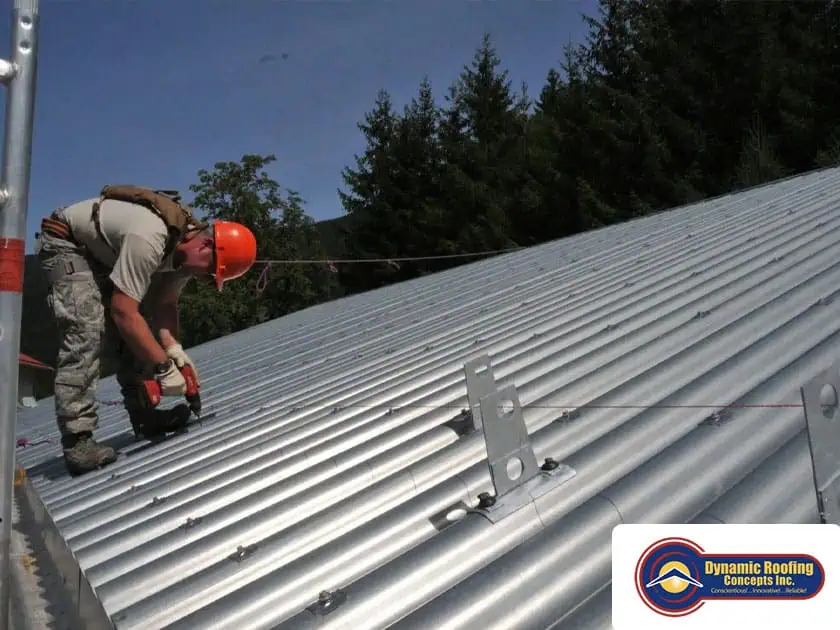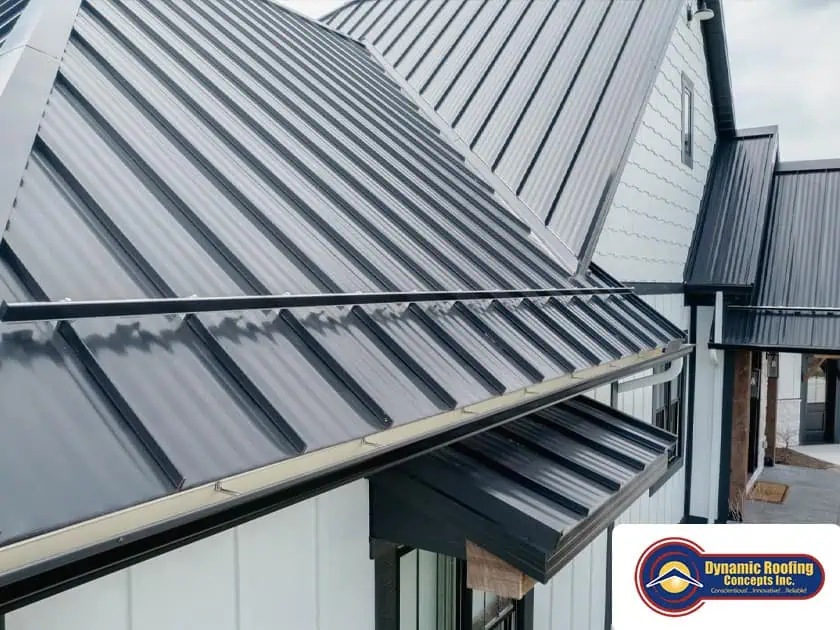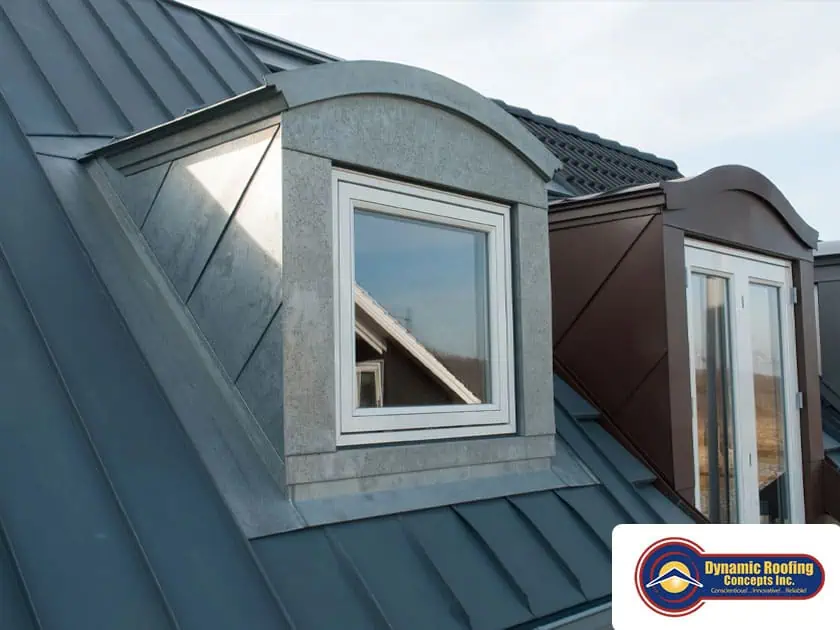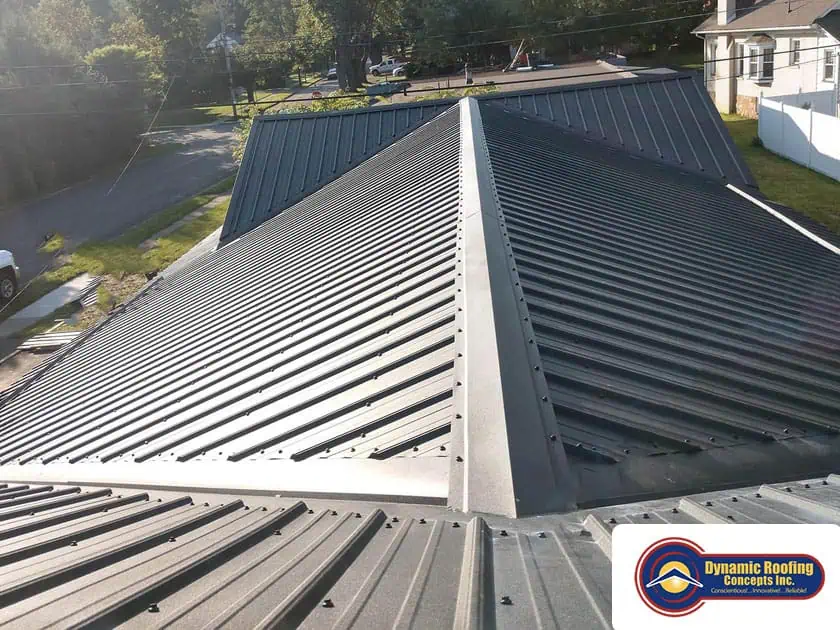

Share On:
Maintaining metal roofs in your home demands attention to detail and proactive care. From checking for signs of wear and tear to implementing preventative measures, staying on top of your roof's maintenance can save you from future headaches. But did you know there's one essential aspect many homeowners overlook? By understanding this key factor, you can greatly increase the lifespan and performance of your metal roof.
Key Takeaways
- Regular visual inspections should be conducted to detect corrosion and rust early.
- Use eco-friendly cleaners and mild soap for cleaning to maintain durability.
- Address small damages promptly with rust-resistant coatings or sealants.
- Keep gutters clean to prevent water buildup and corrosion acceleration.
- Consider professional roof maintenance services for accurate assessment and longevity.
Importance of Maintenance
Regular maintenance of your metal roof ensures its longevity and performance. Rust prevention and corrosion control are vital aspects of this upkeep. Metal roofs are durable but still susceptible to rust, especially in areas with high humidity or exposure to saltwater.
Implementing rust prevention techniques, such as applying protective coatings or using galvanized metal, can greatly extend the lifespan of your roof. Corrosion control is equally vital, as metal roofs can deteriorate over time due to environmental factors like acid rain or pollutants.
Inspecting your roof periodically for signs of corrosion and promptly addressing any issues can help prevent extensive damage and costly repairs. Remember, a well-maintained metal roof not only enhances the aesthetics of your home but also provides reliable protection for years to come.
Inspection Guidelines
When inspecting your metal roof, remember to conduct regular visual checks to catch any issues early on.
Make sure to address small problems promptly to prevent them from escalating into larger, costlier repairs.
It's advisable to have professional inspections done periodically to guarantee the roof's longevity and performance.
Regular Visual Checks
To guarantee the proper maintenance of your metal roof, conduct routine visual checks following these inspection guidelines.
- Start by examining the roofing materials for any signs of corrosion, loose screws, or rust formation.
- Check for any weather damage, such as dents, scratches, or areas where the protective coating may have worn off.
- Inspect the seams and edges for gaps or signs of peeling sealant.
- Look out for debris buildup in valleys or gutters that could lead to water pooling.
- Confirm that any vents or protrusions are securely in place.
Regular visual checks help you catch potential issues early, preventing costly repairs.
Addressing Small Issues
Promptly address small issues on your metal roof to prevent them from escalating into larger problems. When conducting your regular visual checks, be on the lookout for common problems like loose screws, rust spots, or small dents. These issues may seem insignificant initially but can lead to more significant damage if left unattended. By tackling these minor concerns early on, you can save time and money in the long run. Many small problems can be fixed with simple DIY solutions, such as tightening screws or applying a protective coating to prevent rust. Addressing these issues promptly will help extend the lifespan of your metal roof and keep it in excellent condition.
| Common Problem | DIY Solution |
| Loose screws | Tighten them |
| Rust spots | Apply coating |
| Small dents | Use rubber mallet |
Professional Inspections Recommended
Consider scheduling professional inspections for your metal roof to guarantee early detection of potential issues and maintain its peak performance. Professional recommendations suggest regular inspections for the following maintenance benefits:
- Peace of Mind: Knowing your roof is in excellent condition can alleviate stress and worry about potential damages.
- Extended Lifespan: Regular inspections can help prolong the lifespan of your metal roof by addressing issues promptly.
- Cost Savings: Identifying and fixing minor issues early can prevent costly repairs or premature roof replacement.
Investing in professional inspections is a proactive approach to caring for your metal roof, ensuring its longevity and functionality.
Cleaning Techniques
When cleaning your metal roof, consider using eco-friendly cleaners to safeguard your roof and the environment. These cleaners are gentle yet effective in removing dirt, debris, and mold without causing damage.
For a more thorough cleaning, power washing can be a great option. However, be cautious with the pressure setting to prevent damaging the roof's surface or protective coating. If you opt for power washing, consider hiring professionals with experience handling metal roofs to guarantee a safe and effective cleaning process.
If you prefer a more hands-on approach, there are DIY solutions you can try. A simple mixture of mild soap and water can often do the trick for regular maintenance. Just remember to avoid harsh chemicals that can corrode the metal over time.
Dealing With Rust
To keep rust at bay on your metal roof, explore various prevention methods, like applying rust-resistant coatings or regularly inspecting for signs of corrosion.
When rust does appear, tackle it using effective removal techniques such as sanding or chemical rust converters.
Consider utilizing specialized rust repair products to restore the integrity and appearance of your metal roof.
Rust Prevention Methods
To prevent rust on metal roofs, regularly inspect for areas with chipped paint or exposed metal. Applying metal coatings can provide a protective barrier against moisture and oxidation. Here are three essential rust prevention methods to keep your metal roof in top condition:
- Keep up with regular inspections: Check for any signs of chipped paint or areas where the metal is exposed. Addressing these issues promptly can prevent rust from forming.
- Apply a metal coating: Consider applying a protective coating to create a barrier between the metal surface and the elements, reducing the risk of corrosion.
- Maintain cleanliness: Maintaining cleanliness: Keeping your metal roof clean from debris and dirt can help prevent moisture buildup,
Rust Removal Techniques
Consider using a wire brush or sandpaper to remove surface rust from your metal roof. These abrasive methods can help eliminate rust effectively. Chemical treatments are also available for tougher rust spots. These treatments break down the rust and make removing it easier. When using chemical treatments, follow the manufacturer's instructions carefully to avoid damaging the metal roof.
Abrasive methods like wire brushes or sandpaper are best suited for light surface rust, while chemical treatments are more effective for deeper rust penetration. By combining these techniques, you can effectively tackle rust on your metal roof and maintain its longevity. Remember to wear protective gear when using chemical treatments.
Rust Repair Products
If you encounter stubborn rust spots on your metal roof, using rust repair products can help address and prevent further corrosion. To tackle rust effectively, consider the following options:
- Rust Prevention Sprays: These products form a protective barrier, preventing rust formation and enhancing the longevity of your metal roof.
- Metal Restoration Coatings: These coatings repair existing rust and provide a durable layer of protection against future corrosion.
- Corrosion Inhibitors: These products actively stop rust, safeguarding your metal roof from further damage.
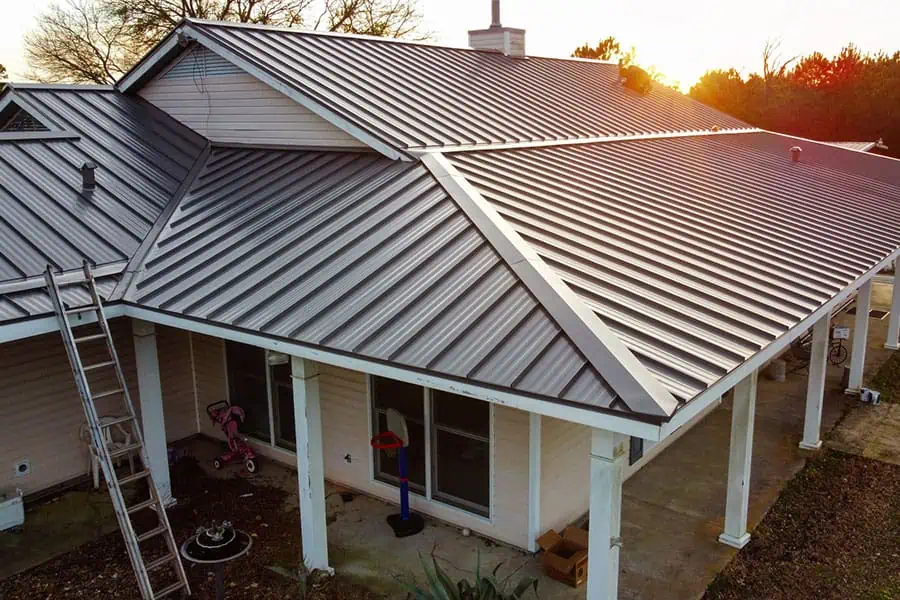
Preventing Corrosion
Regularly inspecting your metal roof and promptly addressing any signs of corrosion can greatly extend its lifespan. To prevent corrosion from taking hold, you can implement several preventative measures.
First, confirm your roof is properly coated with a corrosion-resistant material. This coating acts as a barrier between the metal and the elements, reducing the chances of corrosion.
Keep your gutters clean and debris-free to prevent water buildup, which can accelerate corrosion and compromise the roof decking. Check roof valleys for trapped leaves or other debris that can cause pooling. Regularly inspect the roof for any scratches or damages to the coating, as these can expose the metal underneath to corrosion.
These corrosion control measures will help protect your metal roof and prolong its durability.
Repairing Minor Damages
To address minor damages on your metal roof, identify small dents or scratches that may compromise its integrity. Once you've located these issues, follow these steps to repair them effectively:
- Apply roof sealant to fill in any cracks or gaps in the metal surface. This will help guarantee water leakage and further damage to your roof.
- Check the flashing around the roof's vents, chimneys, and other protrusions. If there are any signs of damage or wear, repair or replace the flashing to maintain the roof's waterproofing.
- Inspect the fasteners holding the metal panels in place. Tighten any loose screws or nails to make certain that the roof remains securely attached and resistant to strong winds.
Professional Maintenance Services
Consider hiring professional maintenance services to ensure your metal roof's longevity and peak performance. While DIY repairs may seem cost-effective, they can sometimes lead to more significant issues if not done correctly. Professional maintenance services have the expertise and tools to assess your roof accurately and efficiently address any issues.
One important aspect of professional maintenance services is the application of metal roof coatings. These coatings act as a protective layer, shielding your roof from harsh weather conditions, rust, and corrosion. Additionally, they can enhance your home's energy efficiency by reflecting sunlight and reducing cooling costs.
Frequency of Upkeep
Maintaining your metal roof involves scheduling routine inspections and upkeep to guarantee its structural integrity and longevity. To keep your roof in top condition, follow these essential guidelines:
- Upkeep Schedule: Establish a regular maintenance routine to prevent rust formation. By sticking to a consistent schedule, you can address any issues promptly.
- Annual Inspections: Schedule yearly inspections with a professional to assess the overall condition of your metal roof and identify potential problems early on.
- Gutter Cleaning: Keep your gutters clear of debris to prevent water buildup and potential damage to your roof. Regularly inspect and clean gutters to ensure proper drainage.
- Trim Overhanging Branches: Trim any tree branches brushing against the roof or causing damage. Falling branches can dent or scratch the metal surface and create avenues for potential leaks.
- Snow Removal: Removing snow from your metal roof is important to prevent excessive weight and strain in areas with heavy snowfall. Use a roof rake or hire professionals to safely remove the snow without damaging the roof.
- Avoid Walking on the Roof: Metal roofs can be slippery, especially when wet. Avoid walking on the roof to prevent accidental damage or personal injury. If necessary, consult professionals with the proper equipment and training to access the roof safely.
- Clear Debris: Regularly remove any leaves, twigs, or other debris accumulating on your metal roof. Debris can trap moisture and accelerate corrosion, leading to potential damage.
Concerned Your Metal Roof Needs Repairs?
If you suspect your metal roof needs repairs or maintenance, don't hesitate to contact the experts at Dynamic Roofing Concepts. Our team of professional roofers contractors has the experience and knowledge to assess the condition of your metal roof and provide the necessary repairs or maintenance to ensure its longevity and durability. Don't wait until a small issue turns into a major problem - contact us today for a thorough inspection and reliable service you can trust.
